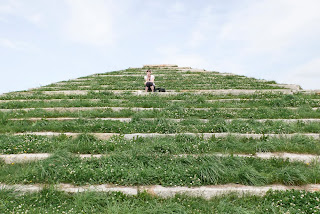Isamu Noguchi (1904 -1988) was a Japanese / American sculptor who was raised in Japan and came to the United States when he was 13. He is best known for his work with stone but was also a master craftsman and landscape artist.
Born in Los Angeles to an Irish-American teacher and a Japanese poet, Noguchi was a true blend of the best of both worlds, combining seamlessly the modern 20th century aesthetic with his artistic Japanese sensibility.
His art exalted the materials to generate a calmness that was palpable.
While studying pre-medicine at Columbia University, he took evening sculpture classes on New York’s Lower East Side, mentoring with the sculptor Onorio Ruotolo. He soon left the University to become a sculptor.
Noguchi worked for a time inParis as an assistant to the sculptor, Constantin Brancusi. When he returned to New York
His art exalted the materials to generate a calmness that was palpable.
While studying pre-medicine at Columbia University, he took evening sculpture classes on New York’s Lower East Side, mentoring with the sculptor Onorio Ruotolo. He soon left the University to become a sculptor.
Noguchi worked for a time in
Noguchi studied how people relate to and within the environment and approached garden making as if he were designing a walk-in sculpture:
"I like to think of gardens as sculpturing of space... An empty space has no visual dimension or significance. Scale and meaning enter when some thoughtful object or line is introduced. This is why sculptures, or sculptural objects create space...The size and shape of each element is entirely relative to all the others and the given space. What may be incomplete as sculptural entities are of significance to the whole."
Noguchi worked around the world creating a large number of playgrounds, parks and gardens.His projects include the gardens for
His last park in Japan
In 1985 Noguchi opened The Noguchi Museum in Long Island City, New York. Located in a 1920s industrial building across the street from where the artist established a studio in 1960, it has a serene outdoor sculpture garden and galleries that display Noguchi’s work. Worth a Visit!








